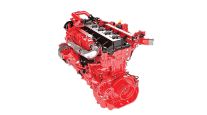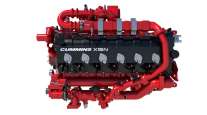Senior Reporter
Cummins Westport Advances Technology as Industry Searches for Growth

“One is the availability of a really affordable clean natural-gas alternative. Then we have to have some regulations that are driving someone to use that technology. And then you have to have incentive money to help them adopt that new technology,” said Rob Neitzke, president of Cummins Westport Inc.
“It is a tough market right now for natural gas with diesel prices down, truck cycles in the bottom, an election year and a lot of [fleet] people resistant to change,” he said.
Cummins Westport is a joint venture between engine maker Cummins Inc., which is based in Columbus, Indiana, and Westport Innovations Inc., a provider of alternative-fuel, low-emissions technologies based in Vancouver, British Columbia.
“But what has not changed is Cummins’ dedication and commitment to the natural-gas engine development and industry, in general,” Neitzke said. “We are continuing to invest more and more on improving the existing engines.”
He said the near-zero emissions natural-gas engine will reclaim the advantage its predecessors once enjoyed over diesel engines that have slashed harmful emissions over the past decade.
The California Energy Commission said it approved in September a $1 million grant to develop a 12-liter natural-gas engine suitable for Class 8 trucks that produces near-zero nitrogen oxide tailpipe emissions.
A midsize Cummins Westport engine has already been certified as 90% lower than the current Environmental Protection Agency NOx limit of 0.2 gram per brake horsepower-hour, or 0.02 gram.
In a comment designed, perhaps, to reassure potential fleet customers, he said a natural-gas engine shares many attributes with its “diesel brother.” The engine block, crankcase and bearings are the same, he said.
“It’s got similar ratings in the torque curve. Both engines are produced at the same [Cummins] manufacturing facilities ... they have the same maintenance intervals,” Neitzke said.
He added, “We are in the second inning. We will be in the third inning in another few years. It will be a slow adoption.”




